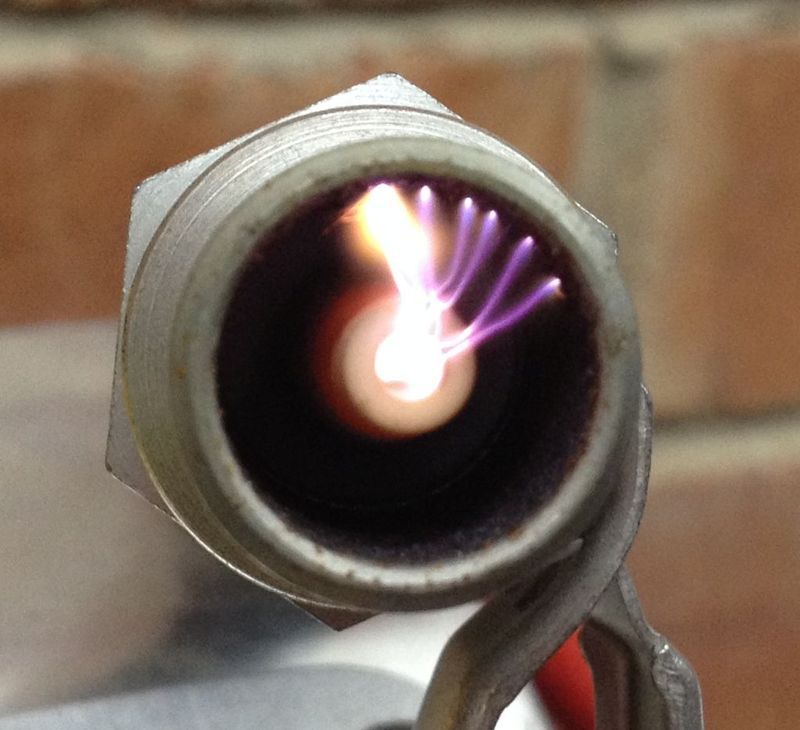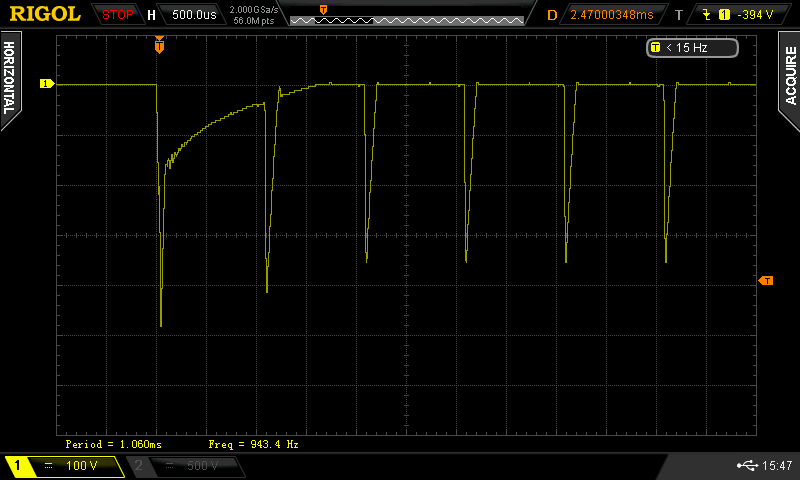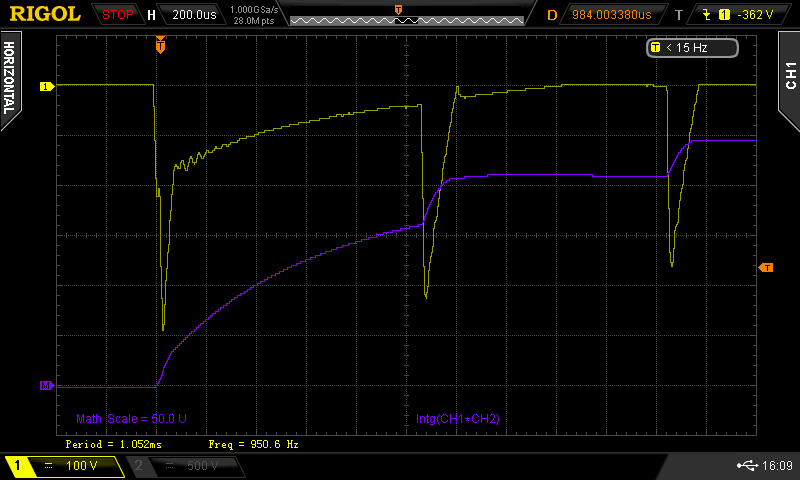What I have done is make an add-on inductive box + coil that you attach to your existing MSD6 series or Digital 7-plus (not other 7 or 8 series). The idea is that the CDI punches through high boost pressure and wide plug gaps and establishes a conductive path in the form of a spark, then before the super short CDI spark goes out, the inductive fires and pours energy into that spark channel for a relatively long time. Each ignition type does what it does best with no downside. A marriage made in heaven.
First pic shows an MSD6 sparking across a HEI test plug and very slightly after the first spark begins, an inductive spark is shoved through the path that has just been established by the CDI. There is also a further five CDI sparks after the inductive has run out. You can easily see the difference. The MSD6 CDI sparks were measured at 38 mJ and the inductive at 150mJ.

Second pic shows the spark current and duration of the CDI and inductive combination. CDI spark by itself is 360mA for 0.15mS and inductive by itself is 150mA for 1.6mS. Look at the area under the curve for both sparks BTW. The MSD is making a "chirp" at low rpm, not running at high speed here.

Third pic shows millijoules energy output. Purple trace (50mJ / div) shows each CDI spark bumping the energy by 38mJ and the single inductive spark by 150mJ. The energy was measured putting the coil outputs to 1600 volts of zener diode in series with a 100 ohm resistor and measuring the integral of volts x milliamps over time. As you can see, the inductive really adds to the total energy.

If there is enough interest in this thing it will become a commercial product. Just want to get people's opinions. I have designed name-brand ignition systems in the past so this is not pie-in-the-sky.


